Published 28/02/2020
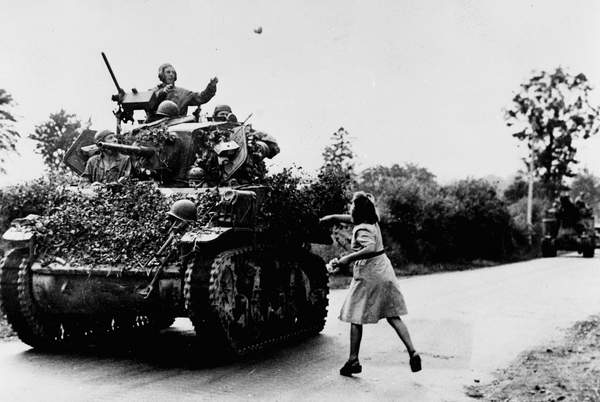
France around 7 August 1944: A young Frenchwoman throws flowers at the crew of a light
M5 Stuart tank of the 4th DB US near the city / Photo © Usis-Dite / Bridgeman Images
Once held by the American Embassy, Thierry Eteve’s collection consists of fascinating, arresting and sometimes harrowing post WW2 photography, including some of the most significant photos of the rehabilitation period from the aftermath.
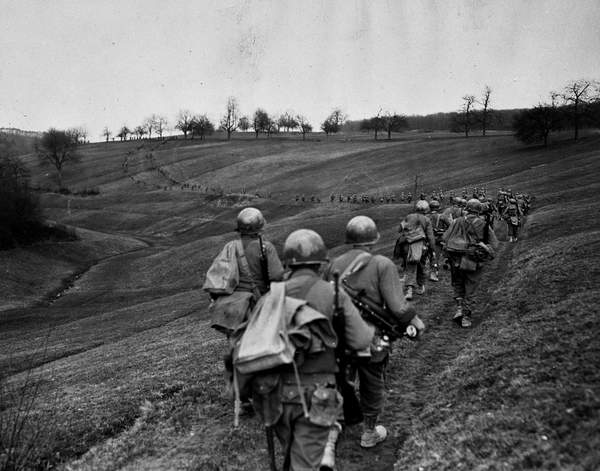
(France) March 1945: Infantrymen of the 103rd DI of the VII US Army advance towards
the German border. / Photo © Usis-Dite / Bridgeman Images
Perhaps most historically significant, and the element of the collection that has recieved the most interest are the photographs documenting the Marshall Plan, which was officially named the 'European Recovery Plan'. The American National Archives came to Thierry Eteve for photographs of this period which they previously lacked. The Marshall Plan was an initiative put in place which pled to give $12 billion U.S. dollars to Southern European countries as part of their programme to help countries who had sustained the most damage from the Nazis. Thus, the photos document both the devastation from after the war, including destroyed houses, streets and cities, and the progression of the recovery efforts over the following months.
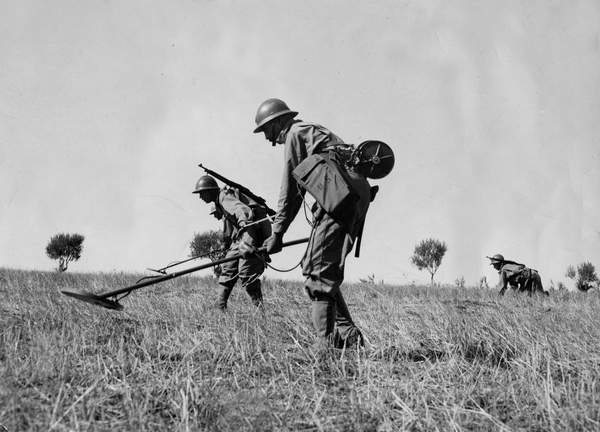
of the Genie of the African Armee collaborating with the 5th US Army
during the Tunisian Campaign / Photo © Usis-Dite / Bridgeman Images
The recovery processes were documented, as well as the devastation left behind. The majority of the photos in the collection feature France. In a period which killed approximately 75 million people, reducing its overall population by 2%, it was evident the world had suffered dramatically.
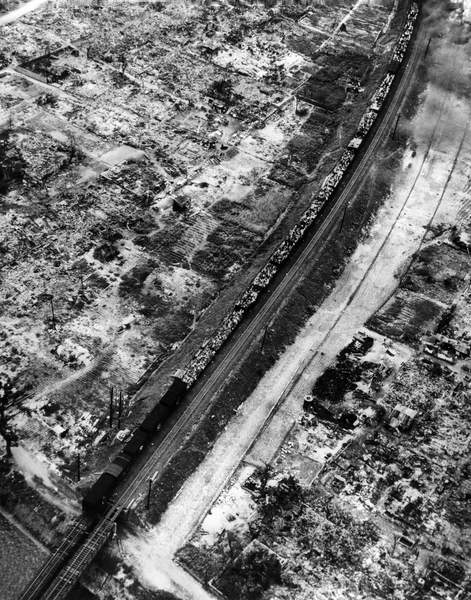
of freight wagons loaded with refugees crosses the city that was devastated
by the first atomic bomb on August 6, 1945 / Photo © Usis-Dite / Bridgeman Images
While initially based in Paris at the American Embassy, once the archive was abolished it was agreed that Thierry Eteve and his father, who was an archivist, should recieve the collection and ever since then the pair have been promoting and selling the work.

in 1956 - Theatre des Mathurins in Paris - / Photo © Usis-Dite / Bridgeman Images
Albert Camus was one of the most famous French philosophers and during WW2 he joined the French Resistance working for a banned newspaper. The French resistance was a movement which resisted the German leadership France was under at the time. This picture is the most famous from the archive as Camus is respected across France due to his bold political views and his participation in the French Resistance.
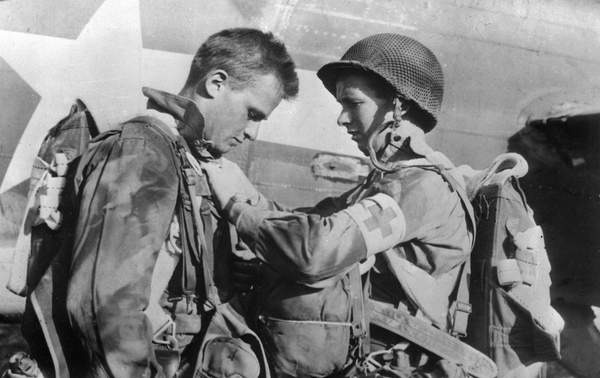
A nurse parachutist of General Robert T. Frederick's “Force Rugby”, ties the pack of
one of his comrades / Photo © Usis-Dite / Bridgeman Images
You can discover our entire selection of Thierry Eteve collection content here.
Bridgeman Images | Image. It’s Everything
Are you looking to license art, culture and historical images? Bridgeman Images offers the highest resolution rights managed images for licensing. Please contact us for free image research or to learn more.


